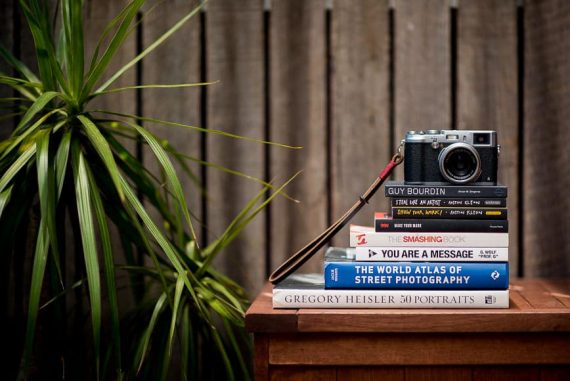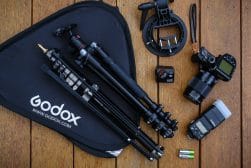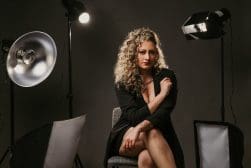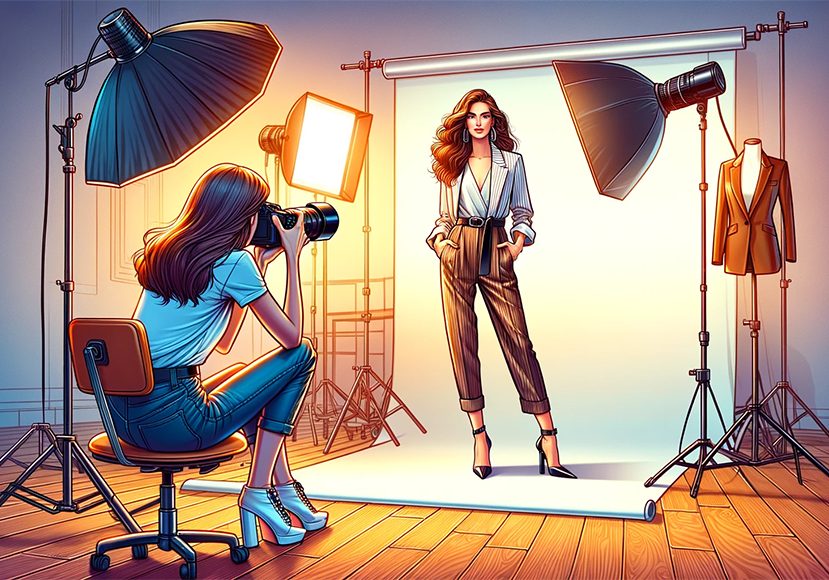
Studio Portrait Photography: 12 Tips & Ideas for Photoshoots
Enhance your studio portrait photography with our expert tips and ideas, perfect for creating captivating and professional photoshoots in a studio setting.
Learn | By Ana Mireles
Are you diving into the amazing world of studio portrait photography?
In this article, you’ll find all sorts of studio photography tips, from setting up your studio to taking portraits with artificial light for the first time.
You’ll also find some more creative things, such as posing ideas, uncommon studio photoshoots, and much more.
Let’s get started!
What Is Studio Portrait Photography?
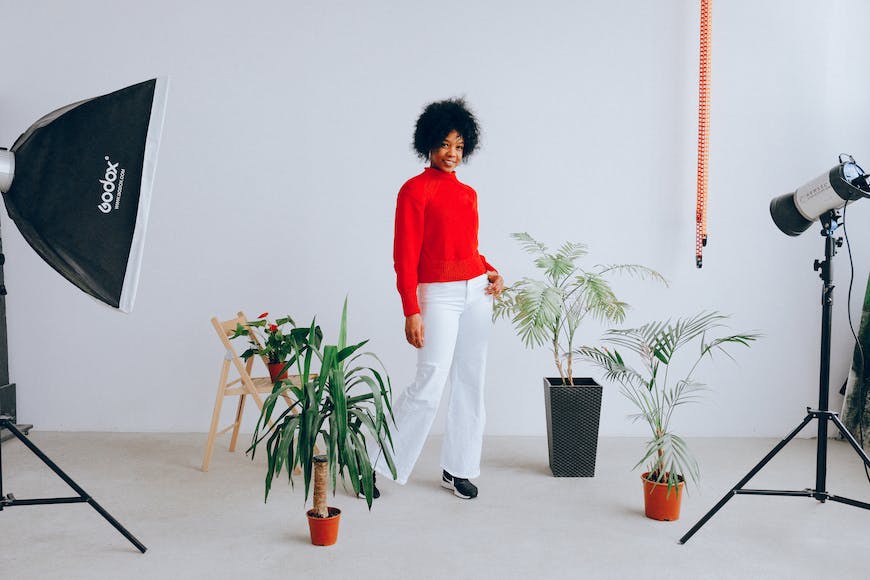
Credit: Anna Shvets
Studio portrait photography is a specific branch of portraiture. How do you define it exactly?
Well, it simply means that you work in a studio space where you can control every aspect of the shot. So, you’ll be using artificial light as opposed to natural light.
You can also choose the background, pose the model, add props, etc.
Studio portraits come in all forms and styles. You can take studio photos of anyone, from a newborn to a group of people.
You can also choose to make headshots or full-body shots.
The lighting, poses, props, and photo editing can be different from one photographer to another – it’s what creates the personal style.
What Does a Studio Photographer Do?
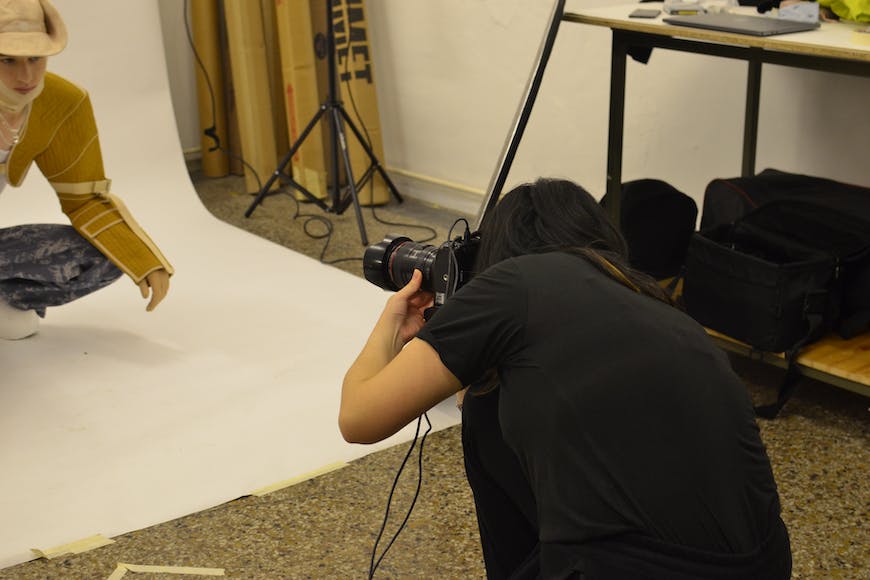
Credit: Skylar Kang
A studio photographer is a person who takes studio portraits. They can choose to specialize in different types of portraiture – for example, one may prefer to shoot headshots and corporate portraits, while another might focus on maternity and family pictures.
The style can also be different. You can make high-key portraits, use gels, shoot silhouettes, etc. The possibilities for a studio photographer are endless.
How to Set Up a Photography Studio
First, you need a space to set up your photography studio. It can be an empty room in your house or your garage, or you can rent a dedicated space – it’s up to your budget and circumstances.
It’s important that whatever space you choose is somewhere where you can block any natural light. This way, you’ll have full control of the lighting in your studio photography. Many people choose to set up their home studio in the garage for this reason.
Once you have your space, the first step is to paint the walls and ceiling white. This way, you won’t get any color cast in your pictures. It will also help you to bounce the light toward your subject if you choose to do it.
Some portrait photographers prefer to use neutral grey to prevent reflections – it’s up to you.
You’ll also need some shelves and tables for organizing all your equipment. This way, everything you’ll need is easy to reach during a shoot. Plus, the space needs to look neat and professional as you’ll be hosting your clients.
You’ll need to set up a “beauty corner.” This is where the hair and makeup artist can work or where the client can use the mirror and do their final touch-ups themselves if they prefer.
Next, you’ll need a seamless backdrop. For this, you can use a wall mount. It’s also possible to use a backdrop stand, but this will take up more space.
Then, you’ll need a lighting setup. You can have one or more lights with their respective tripod stands. If you don’t have much space, you can also use wall-mounted boom arms or a ceiling rail system.
I’ll talk more about lighting later, but know that you can make studio portraits even with one light source. So, you can start small if you want and add more lights later if you prefer.
How Much Do You REALLY Know About Photography?! 🤔
Test your photography knowledge with this quick quiz!
See how much you really know about photography...

What you will need for sure are light modifiers like reflectors and soft boxes. The size and shapes may change depending on your style and the lighting setup you use.
You’ll also probably need some props – these can be as simple or as elaborate as you want.
- Read more about setting up a home photography studio on a budget.
How Much Space is Ideal for a Photography Studio?
There isn’t a single answer to this. A portrait photography studio can have different “ideal” sizes depending on many factors.
The first thing to consider is the type of portrait photography you want to do. If you’re just going to do headshots, then a small room of 3 x 3m is enough. For small groups or full body shots, you’ll need something bigger – at least 4.5 x 5m.
This will also depend on the amount and type of equipment you use. The space required to build a one-light setup or a five-light setup is very different.
It’s also different if you use off-camera speedlights with a diffuser or flat LED panels than if you use strobe studio lights with a big octabox and other modifiers.
So, the term “ideal” can be misleading. To work comfortably and not have to limit your creativity due to space, professional photographers recommend an average size of 9 x 5m.
Don’t forget about the height. It’s also useful to have high ceilings so you can light your subject from above.
What Is the Basic Gear Setup for a Photography Studio?
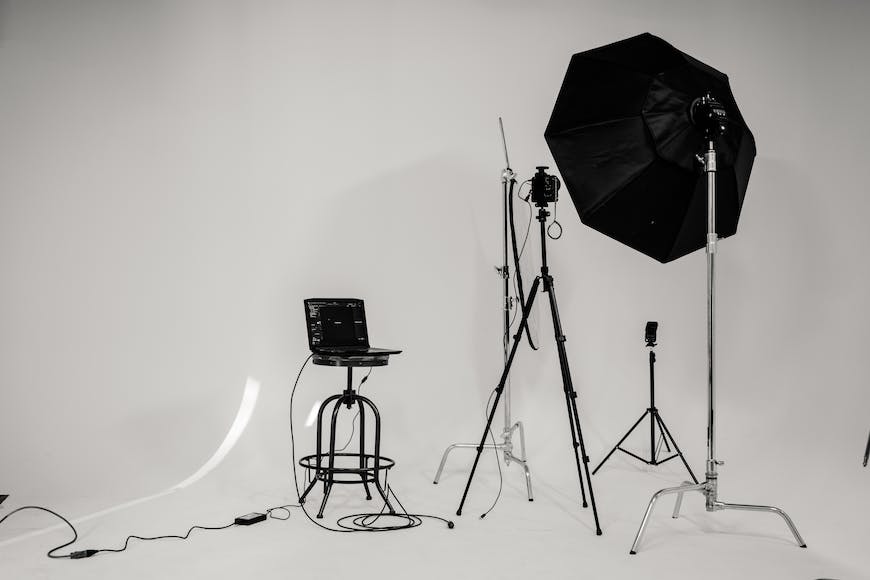
Credit: Brett Sayles
If you think you need tons of expensive equipment to make great studio portraits, I have good news for you. It’s possible to start shooting studio portraits with just a few items.
Then, you can add more equipment as you grow as a professional photographer to open up more possibilities.
Keep in mind that it’s also possible to rent equipment or fully equipped professional studios. So, whenever you need something that you don’t have, you can simply rent it for the day – don’t let it stop you.
Here’s the basic gear you’ll need for studio photography.
Camera
You can use almost any camera that has a manual mode. If you plan to use flashes, you’ll need to ensure you can connect them to the camera.
This is why a crop sensor or a full-frame DSLR or mirrorless camera will do just fine.
Lenses
The focal length you’ll need highly depends on the type of portraits you want to shoot and the available space. You don’t want to use a telephoto lens if the photo studio is 3 meters long.
Having said this, most photographers like to use either a 50mm lens or an 85mm. This way, you won’t get much distortion in the face and body of the model.
Whichever focal length you choose, a prime lens is advised. This is because prime lenses usually deliver sharper images than zoom lenses. Also, prime lenses have wider apertures – perfect for blurring the background.
Lights
In studio photography you don’t work with window light or artificial ambient light as you need to be able to have full control.
So, you’ll need to have at least one studio light. I’ll talk more about lighting further on – for now, let’s say that there’s a wide variety of strobes and continuous lights to choose from.
Light Modifiers
Light modifiers are a must-have in a photo studio. You’ll need at least one that softens the light – such as a softbox or a diffuser.
A reflector is also important for almost any lighting setup. You can have a neutral white one or a silver reflector. Gold reflectors are also great for achieving warmer tones when taking portraits.
Maybe less common in portrait photography but still useful is something that condenses light like a honeycomb grill.
Light stands
You’ll need a light stand for every light you use. This can be replaced by wall-mounted supports or ceiling rails if you prefer.
Backdrop
While it’s possible to use a white wall, most studio photographers prefer to use backdrops. They are available in different materials; you can mount them on the wall or use a portable backdrop stand.
The best one to start with is a white one. This way, it’s easy to replace in post-production if you want more variety in colors, textures, etc.
Trigger
Unless you plan on using continuous light, you’ll need a trigger. It’s more comfortable to use wireless triggers, but if you’re on a tight budget, you can connect your flash to your camera with a cable.
Tripod
Not every portrait photographer needs a tripod. However, having one will give you more creative flexibility if you want to do long exposures and other visual effects.
What Lighting Is Best for Studio Photography?
You can do amazing things with just one light, a softbox, and a reflector. Here are six common lighting setups in studio portrait photography.
Of course, if you have more lights, you can build on any of these to make a more complex setup.
- Rembrandt lighting. You’ll need your key light placed at a 45-degree offset and above the head level. This will create a triangle of light under the eye on the opposite side of the face. It creates very dramatic portraits.
- Split lighting. It comes straight from one side of the model’s face, leaving the other half in complete darkness. If you don’t like dark shadows, you can add a fill light or a reflector.
- Broad lighting. If the face is at a 45-degree angle to the camera, you’ll be lighting the broad side of the face.
- Butterfly lighting (Paramount light). Put the light in front of the subject above their head, pointing down. This creates a “butterfly-shaped” shadow under the nose, creating very flattering portraits.
- Loop lighting. This setup is less dramatic than a Rembrandt; your light must be about 35 degrees from the camera.
- Rim lighting. This light comes from behind the subject, and it’s great for low-key portraits.
What Type of Lights Are Best for Studio Photography
There are two main roads you can take in studio portrait photography: flashes vs. continuous light. Once you’ve decided on that, you have a few choices for each one.
As far as continuous light, you’ll have LED lights and COB lights. For flashes, you can use strobes or speed lights.
Both of them have pros and cons – each photographer may find it best to work with one or the other.
Continuous light pros:
- What you see is what you get.
- You can also use them for video.
- Adjustable color temperature.
Continuous light cons:
- Less powerful than strobe lights, especially at a lower cost.
- Many technologies get very hot. If you want cool lights, it’s better to use LED technology.
- The ambient light is going to affect your photos.
- You need more attention to prevent motion blur.
Strobe light pros:
- Very powerful, so you can overpower window light, shoot at narrow apertures, etc.
- Freeze motion even if you combine them with longer exposures.
- Wide variety of modifiers with standard mounts.
Strobe light cons:
- You can’t use them for video.
- Steeper learning curve for a perfect exposure and multiple light setups.
- Synch speed.
- You need triggers.
Are LED Lights Good for Studio Photography?
They can be, but only for certain purposes. If you need to shoot with a fast shutter speed to freeze motion or use smaller apertures to increase the depth of field – then no.
However, if you need to work with video simultaneously as stills or want to control the color temperature, then yes, LED lights are good.
How Many Lights Do You Need for Studio Photography?
There are many things you can do with just one light source. However, more lights give you more creative possibilities.
Some photographers work with a single light, while others like shooting portraits with a five-light setup. It depends on your style.
The most traditional setup involves three light sources – the key light, the fill light, and a hair light.
What Background Is Best for Studio Photography?
As so often happens, there isn’t one item that’s best for every photographer – the best one depends on your own needs.
Generally speaking, a seamless white background is professional and versatile. So, this might be the best background to start your studio photography.
You can later buy more as you progress and develop your style.
If you think you’ll often use digital backdrops, the best background is a chroma key. This will make cutting out the subject easier so you can add the background in post-production.
As far as the material goes, muslin is commonly used because it’s versatile and has a relatively low cost. You can use it straight or draped if you need some texture. It’s possible to wash, and it’s light enough to handle easily.
Otherwise, you can choose canvas or cotton fabrics.
How Do You Plan a Studio Photoshoot?
To properly plan a photoshoot in your studio, you need to be clear about your client’s expectations and your budget. You need to consider pre-production, the actual shooting, and the photo editing.
Discuss what the concept is and how they’re going to use the photographs. A helpful tool is to ask them to build an album on Instagram or Pinterest. This way, you’ll know what they’re expecting.
If you’re doing a photoshoot for your own projects, you can use the same method to find inspiration.
Once you have your references, you can think about a color palette for the background and the props you’ll need for the photoshoot.
Now, contact the hair and makeup artist or any other professional who will be involved in the photoshoot. Give them as much information as you have – a good briefing is key to a successful collaboration.
Then, make sure you have the necessary equipment – this means lenses, lights, and light modifiers. If you need something you don’t have, you can rent it for the day.
If you’re already familiar with planning photoshoots on location, you’ll notice that it’s not so different.
Studio Photography Tips for Beginners
Now that you have everything set up, here are some studio photography tips to set you up for success.
Best camera settings
The first thing you need is to set the custom white balance. Your lights are calibrated to a specific temperature, so set the correct Kelvin degrees, and you’re good to go.
Next, set the camera to manual mode and choose raw format. You’ll need to adjust the camera settings in such a way that you get a completely black image. This way, you’ll know that the ambient light won’t affect the exposure.
A good starting point is ISO 100, shutter speed 1/160 and f/8. Of course, this depends on whether there’s window lighting or you can obscure the entire room.
Now, you can connect the flash trigger or turn on the LED light you’re using and do a test shot. Based on this test shot, you can adjust the aperture if you want to change the depth of field.
To adjust the exposure, you can dial up or down the power of your lights instead of changing the camera settings.
If you’re using flashes, remember that they have a maximum synch speed. Normally, you’ll need a shutter speed slower than 1/250. However, some of them allow for high-synch speed (HSS).
To keep a sharp focus in the subject’s eyes, use the AF mode. Set it to AI Servo or Continuous with a single point focus and turn on the eye or face tracking feature.
Use props
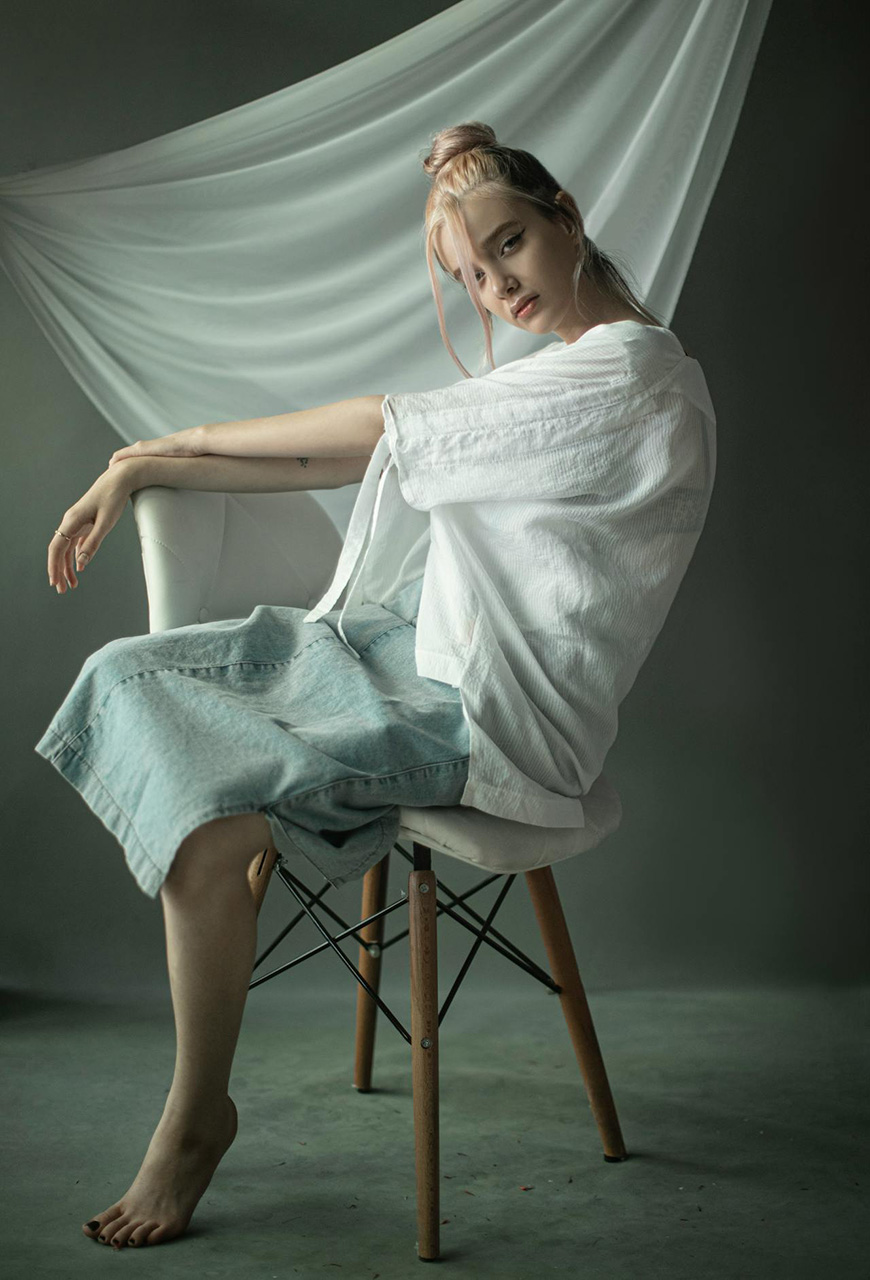
Credit: Shayan Rostami
Another useful studio photography tip is to use props to make your images more versatile and creative.
Some popular studio props are pieces of furniture. You can fill the background, change the scene’s mood, or have your model interact with them to change poses.
A simple chair or a stool is already helpful, but you can even bring in a tub or a Baroque-style couch. The only limit is the available space.
It’s also useful to use small props – for example, something your model can hold in their hands.
This can be anything from a heart-shaped balloon for a couple’s session to plush toys for a toddler. It all depends on the model and the concept of the photo.
3 Studio Photography Poses
Most studio portraits are posed. If you’re working with a professional model, they will already have some poses prepared, and this can be very helpful.
However, you’ll probably find yourself working with people who have never had a studio portrait taken. This is where you’ll need to do most of the direction.
Here are a few beautiful and easy poses to get you started.
45-degree
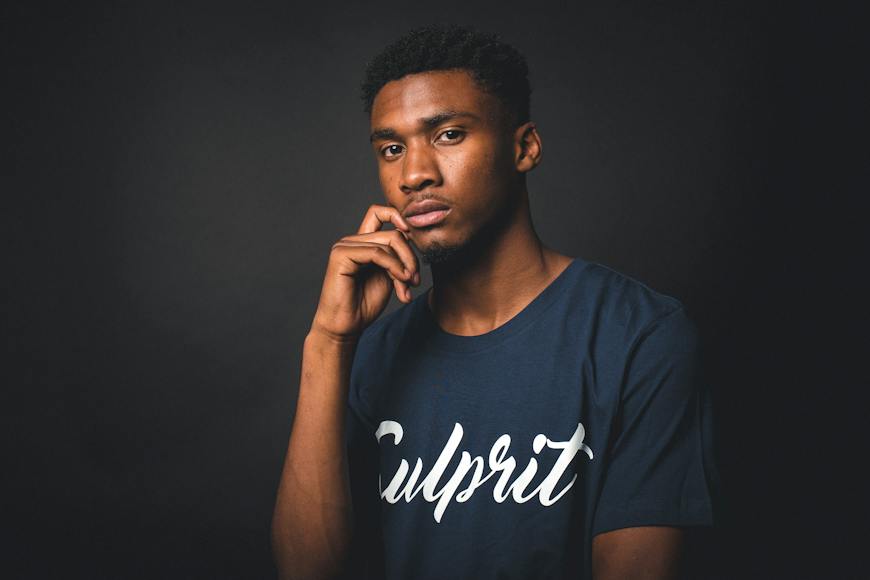
Credit: Spencer Selover
Whether it’s a full body shot or a headshot, angling your model 45 degrees instead of facing the camera straight on is always more flattering.
Pop the hip
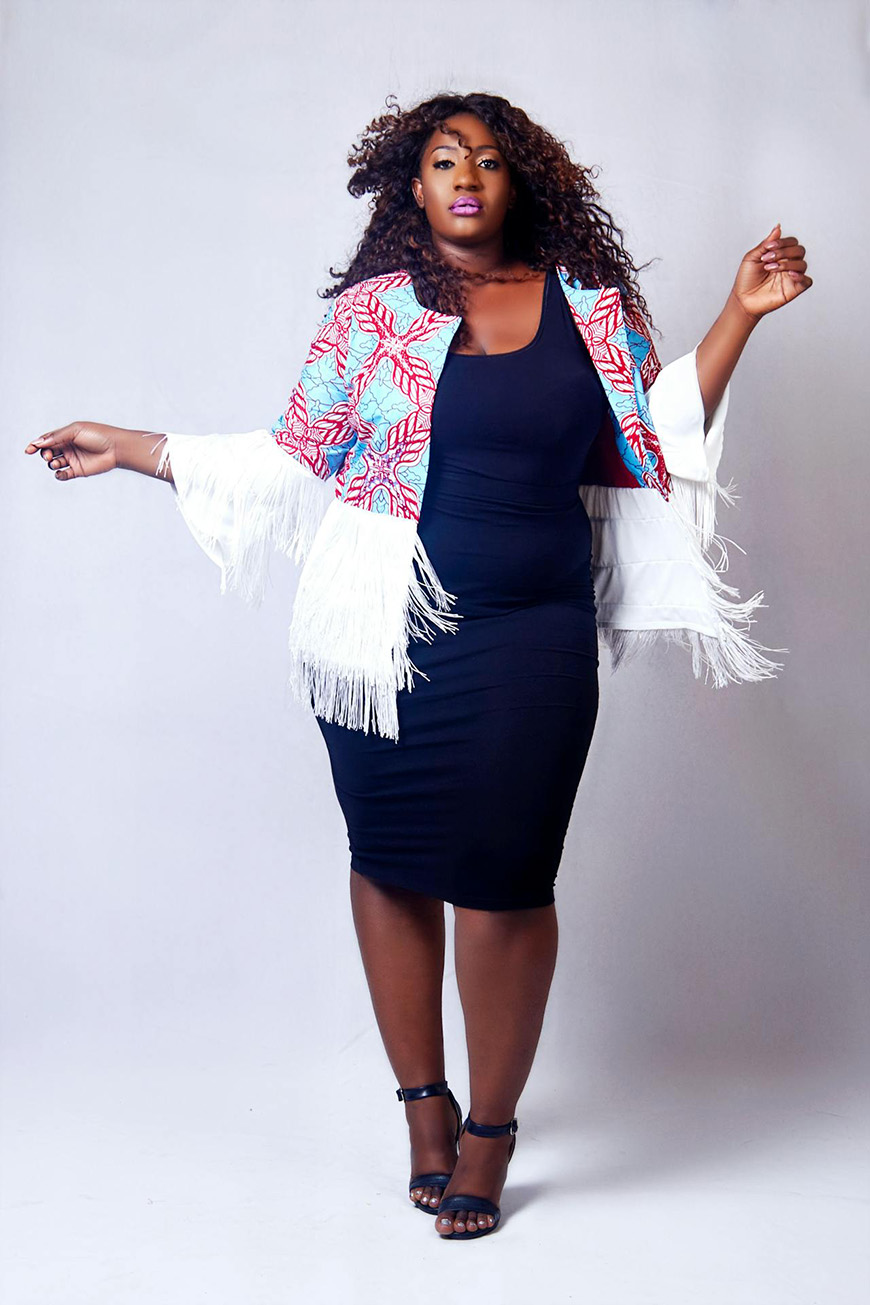
Credit: Jennifer Enujiugha
If your subject is standing, make sure they have the weight on one leg – this will pop the hip and allow them to relax the other leg.
They can cross their legs or take a little step forward to give more movement to the pose.
Sitting and leaning forward
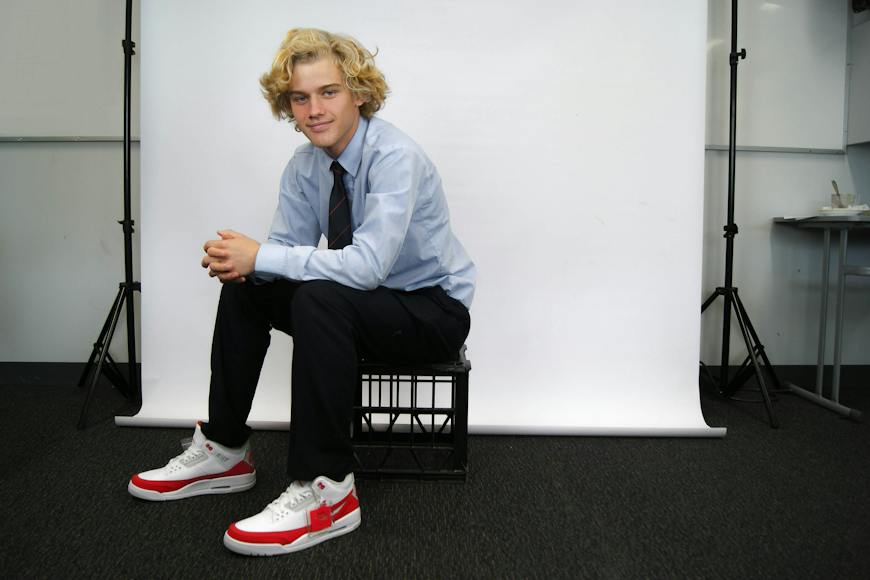
Credit: JD Danny
Whether you use a chair, a stool, a couch, or even a milk crate, it’s always a good idea to ask your subject to lean forward. This works well on full-body portraits and if you have a tighter frame.
2 Unusual & Creative Studio Photography Ideas
Are you looking for more vibrant pictures? Here are a couple of creative studio photography tips.
Flour/powder portrait
If you don’t mind cleaning up the mess, this is a very vibrant and creative portrait you can do in a studio setting.
You’ll need a black background. The light must come from the side, so you can use a strip box on one side and a softer one on the opposite side.
If you want a more complete setup, you can add a beauty dish above the subject’s head.
Feel free to add gels if you use flour; otherwise, use white light and colorful Holi powder.
Long exposure movement
If you think that studio portraits need to be posed or stiff, then you’ll love this idea.
You need a black background, so you’ll need to use directional light. You can achieve this by adding a grid to the softbox.
You can use a flash on one side and a continuous light on the other. You’ll need to set a slow shutter speed so that the light from the continuous light source is recorded and also detects the motion.
You can use the aperture and the flash power to determine the correct exposure of the pulse of light. Now, ask your model to move and start experimenting.
You can use the first or second curtain flash synch for different results
Studio Photography FAQs
What does a photographer need in a studio?
In its most basic setup, all the equipment you need is a light and a camera. Of course, you’ll have more creative possibilities with more lights, light modifiers, backdrops, props, etc.
Why are studio photos so expensive?
On top of the usual expenses, a professional photographer who works in a studio must pay rent, facilities, and insurance, and buy and maintain all the necessary equipment.
On average, photographers spend 40% of their revenue on studio-related costs.
How profitable is a photography studio?
Studio portrait photography is one of the most profitable branches of photography. According to findmodelslab.com, 70% of photographers with a studio report making a profit on their business.
What is the best flooring for a photography studio?
There are several opinions on this. Many photographers choose a vinyl or linoleum floor as it’s durable, smooth, and easy to clean.
As for the color, you can use white or light grey so it’s easy to blend with the backdrop. However, some photographers prefer to use something with a texture and incorporate it into the photo – for example, wood.
What is studio-style photography?
Studio style means that the portrait session takes place indoors, and the photographer uses lighting equipment to have full control of the environment.
Is it easy to get a job in studio photography?
This may depend on where you live, your skills and experience, and your job-hunting approach.
Some photographers prefer to look for their assistants directly at recognized photography schools. Others hire someone who’s been recommended to them.
I advise you to research the studios you want and make a targeted presentation letter to make things easier. Sending tons of impersonal emails is not going to work – they probably receive too many of those.
How can I become a studio photographer?
The most important thing to become a studio photographer is to master lighting techniques. Before investing in expensive gear, you can rent fully equipped studios to practice and build a portfolio. Then, you can start looking for clients.
Another way to go is to work as an assistant in a photography studio. However, these positions aren’t always easy to get.

Check out these 8 essential tools to help you succeed as a professional photographer.
Includes limited-time discounts.








